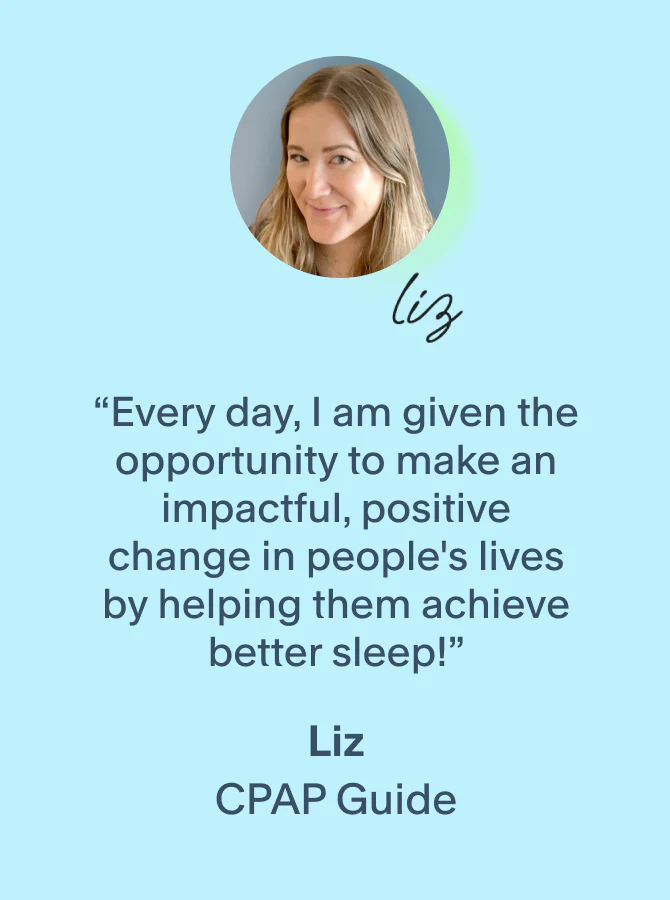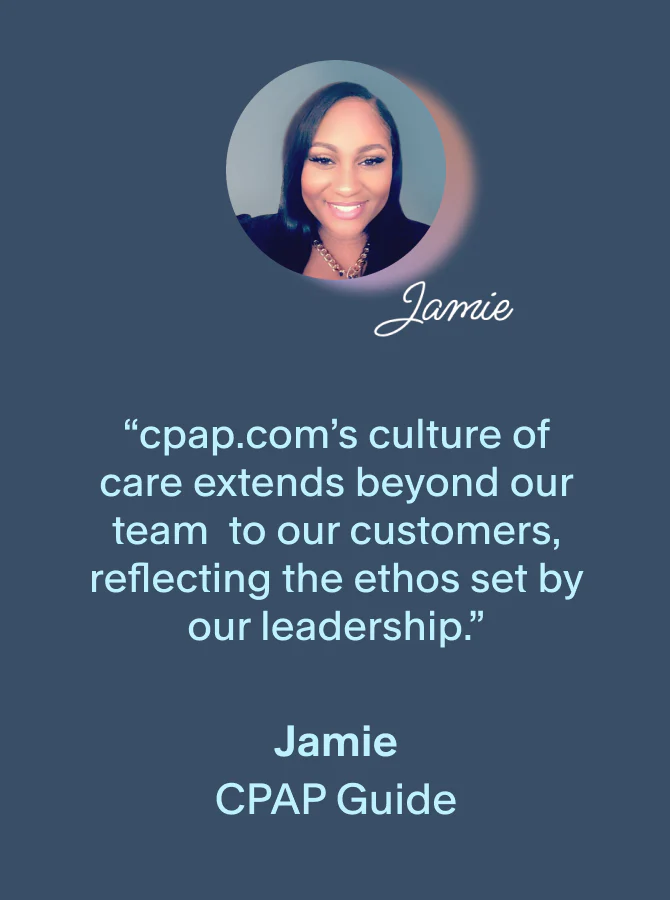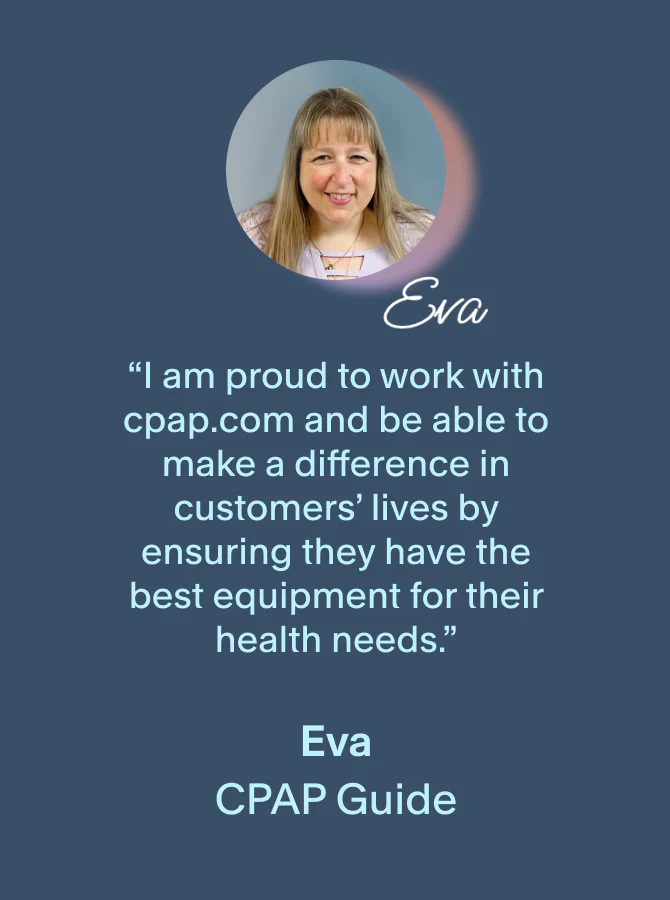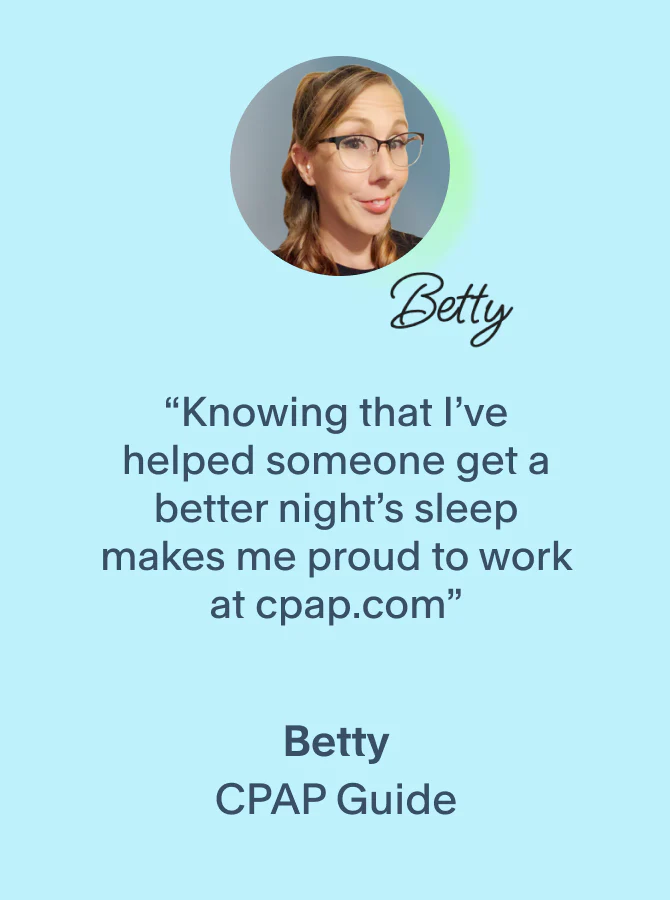Our content undergoes rigorous expert review, evidence-based research, and regular updates for accuracy.
The first major winter storm of 2024 recently hit the US, slamming the Midwest with over a foot of snow and leaving millions on the East Coast without power. Winter Storm Finn affected over 70 million Americans, many of whom rely on life-saving medical equipment, including CPAP machines.
If you are one of the nearly 8 million Americans who rely on CPAP therapy for sleep apnea, winter power outages can lead to sleepless nights and health concerns. The good news is there are steps you can take to avoid losing access to your CPAP machine when the lights go out!
Today’s CPAP Winter Preparedness Guide will cover:
- How Winter Power Outages Impact CPAP Therapy
- Supply Checklist for CPAP Therapy
- Tips for Maximizing Your CPAP Battery’s Run Time
- What To Do if You Can’t Power Your CPAP
- General Tips for Keeping Therapy Comfortable in Winter
How Can a Winter Storm Power Outage Affect Your CPAP Therapy?
A night or two without your CPAP machine may not have lasting impacts on your body, but it can lead to poor sleep and a temporary return of some bothersome sleep apnea side effects.
Many CPAP owners complain that it is difficult to fall asleep and stay asleep when power outages leave them without their CPAP machine.
The good news is that these negative effects are reversible, so they should improve once the electricity comes back on and you’re able to use your CPAP machine again.
If you’ve lost power and can’t use your CPAP machine, you may experience a few unpleasant issues, such as:
- Trouble Falling Asleep
Once you get used to sleeping with your CPAP machine and mask, many people find it difficult to fall asleep without it.
Sleeping with CPAP gives you peace of mind. Some people even rely on the sound of airflow to help them drift off, acting as pseudo-white noise.
- Snoring
One of the primary side effects of sleep apnea is increased inflammation in the upper airway, which leads to snoring.
The inflammation and snoring usually improve when you use your CPAP machine regularly. But that inflammation will return over time if you suddenly stop CPAP therapy.
Because of this, many people experience mild snoring if they don’t sleep with their CPAP machine for a night or two.
If you find yourself without your CPAP machine for several days or more, that snoring will eventually return to pre-CPAP severity.
- Poor Sleep Quality
Simply put, when your AHI score increases, your sleep quality worsens.
This change may not be too noticeable for some CPAP owners as long as the electricity returns within a couple of days.
However, many people report that their sleep quality is immediately impacted if they are forced to sleep without their CPAP for any amount of time.
- Breathing Disruptions
Research suggests that it usually takes at least a few days for your sleep apnea severity to return to your pre-treatment levels.
Still, not using your CPAP machine for a couple of nights can temporarily increase the number of sleep apnea episodes you experience while you sleep.
In other words, your AHI score goes up.
- Metabolic and Cardiovascular Changes
The impacts of sleeping without your CPAP machine due to a winter power outage are relatively minor for most people.
However, research suggests that your body begins to experience some small changes soon after falling asleep without your CPAP equipment.
Your cardiovascular system is the first part of your body to experience these effects, which can result in a slight increase in heart rate or blood pressure.
Additionally, your body may experience small increases in blood sugar and stress hormones while sleeping without your CPAP.
Winter Weather Supply Checklist for CPAP Therapy
If you’re expecting power outages due to winter storms, you need to be prepared with the right supplies. Here are some items to keep in mind!
- CPAP Battery
If you have concerns about powering your CPAP machine (or any other device) during a power outage, the most important thing you can do is purchase a backup power source!
Generators are a good example, but they don’t work for everyone and are often expensive, so we highly suggest purchasing a good CPAP battery.
Having a backup CPAP battery ensures your sleep apnea treatment goes uninterrupted despite the weather.
We recommend a high-capacity battery like the Zopec Explore Oxygen or Zopec Explore 8000. These devices act as backup batteries that automatically power your machine when the electricity goes out.
The Portable Outlet UPS Battery is also a great choice if you want a backup battery for home and travel. But it isn’t as powerful as the batteries mentioned above.
Want to know more about choosing a CPAP battery? Check out our review of the best CPAP batteries for more recommendations!
- Extension Cords and Power Strips
If you are using a gasoline-powered generator, you should know that these devices pose a huge safety risk when run indoors. This risk does not apply to solar-powered, electric generators.
Experts suggest keeping your generator outside, near a window. Of course, this makes plugging in your CPAP machine a challenge.
The simplest solution is to keep a long extension cord and power strip on hand so you can sleep far away from your generator while still enjoying the benefits of sleep apnea treatment.
- DC Power Adapter
A DC power adapter for your machine may also come in handy and free up other outlets you may need on your generator if it has a 12V outlet.
Outside of this, a DC power adapter may help in worst-case scenarios.
If your only means of powering your CPAP is through a 12V outlet in your car or RV, a DC power adapter will allow you to be more flexible with power options.
- Distilled Water
Experts recommend everyone use heated humidification with CPAP whenever possible for a more comfortable experience—especially during winter weather.
So, if you use your CPAP humidifier every night, it’s a good rule of thumb to have a few gallons of distilled water on hand if you’re expecting a winter storm.
If you don’t want to store water jugs, you can also purchase a water filtering system instead.
Remember to fill a spare bathtub or sink with water for flushing toilets or washing hands before a hard freeze or power outage. This way, you can reserve your distilled water for CPAP use only.
We also recommend keeping a case of bottled water on hand for drinking. This is a better solution than drinking water stored in your sink or tub, but if you have to resort to drinking that stored water, we recommend filtering it first.
- Essential CPAP Supplies
Winter weather can impact shipping, making it difficult to replenish your CPAP supplies on time. This inconvenience can ultimately impact the effectiveness of your treatment.
You’ll want to order replacement supplies well before inclement weather hits so that you can replace necessary equipment on schedule.
You’ll want a fresh air filter and cushion for your mask on hand, but the rest of your equipment should be fine for longer stretches of time.
Not sure when to replace your equipment? View our CPAP Supply Replacement Schedule!
- CPAP Hose Cover
If you’ve ever woken up one cold winter morning and realized your CPAP hose is gurgling or filled with water, you’re familiar with a phenomenon called CPAP rainout.
Rainout can occur in any environment, but it’s much more common when it’s cold outside—particularly during cold weather.
Luckily, this can be prevented by insulating your CPAP hose with a towel, blanket, or, even better, a hose cover.
- CPAP Cleaning Wipes and Sprays
Keeping your CPAP machine clean is essential, no matter what the weather looks like outside!
Regularly cleaning your CPAP becomes a struggle when the power goes out. It becomes even more difficult if you lose access to running water due to frozen pipes.
CPAP wipes and sanitizing spray make it easy to remove any dirt, oil, or germs that build up on your CPAP equipment– even when you can’t turn on the tap.
Tips for Maximizing CPAP Battery Life During a Power Outage
If you end up relying on your CPAP battery for therapy, here are a few tips to get the most out of your battery life:
- No Heated Humidification
The heating element in your humidifier has a big impact on the amount of power your CPAP requires.
You can disable the heated humidification on your machine by turning your humidifier setting off or to zero in your settings menu.
If you’re used to using your humidifier, fill the water chamber as you normally would. A small amount of moisture will still be picked up when the air passes through your water chamber, just not as much as with heated humidification.
- No Heated Tubing
If you use heated tubing, disable it via your settings menu, or use a standard tube if you have one handy.
If you don’t have one on hand, disabling the heating element in your settings has the same effect.
A tubing wrap or hose cover will help to insulate your hose in place of heated tubing, so it’s a helpful solution that doesn’t require extra power.
- Use Power Saving and/or Airplane Mode
If your machine offers these features, enable Airplane Mode and/or Power Saving Mode.
Different machines have different ways to access these features, so you’ll need to look up instructions specific to your machine.
Enabling these features will only have a small effect on your machine’s power draw, but every little bit counts when it comes to extending your therapy.
- Choose a Battery With DC Power
The Portable Outlet and Zopec batteries mentioned above offer standard AC wall outlets for your machine, meaning they are universally compatible with any CPAP device.
However, since these batteries convert DC power to AC power internally, they are slightly less power-efficient than a battery that directly provides DC power to your CPAP.
In a nutshell, this means AC batteries are more likely to run out of power faster.
If your budget doesn’t allow for a high-capacity battery, a smaller direct power option like the Medistrom Pilot, Freedom V2, or EXP48 Pro may be better.
Just make sure it’s compatible with your machine before you buy!
- Use a Travel Machine If Available
If you happen to have a travel-sized CPAP machine handy, it will use significantly less power than a full-sized machine, extending your battery’s runtime.
What to Do if You Can’t Power Your CPAP
Not being able to use your CPAP when you’re unprepared can be stressful, but there’s no need to panic!
- Remain Calm: The number one thing to remember is not to panic. While your CPAP machine is helpful, you will survive a few nights without it if you must.
- Listen to a Sound Machine: If you struggle to fall asleep without your equipment running, some people find it helpful to listen to white noise on your phone or a battery-powered sound machine to help replace the sound of your CPAP device.
- Check Your Sleeping Position: To reduce sleep apnea episodes, consider the best sleeping position for sleep apnea: lying on your side or in a reclined posture instead of flat on your back.
Tips for Keeping Therapy Comfortable in Winter
If your power manages to stay on throughout the cold weather, here are a few things you can do to keep warm and comfortable:
- Optimize Your Humidifier: Increasing your CPAP humidifier settings can help make you more comfortable if the cold weather is causing discomfort. Increasing your humidification also reduces CPAP rainout.
- Try a Whole-Room Humidifier: Despite your machine likely having a built-in humidifier (which is worth using!), adding a humidifier for your entire room can positively impact your overall therapy. The added moisture can prevent you from drying out and developing inflamed, irritated airways.
- Turn Up the Heat: Not only will turning your house heater up a few degrees keep you warm and cozy, but it’ll also help your humidification be more consistent and prevent condensation buildup, known as rainout.
- Stay Hydrated and Moisturized: Drinking enough water throughout the day makes your humidifier’s job easier and helps prevent nose, mouth, and throat dryness. Use water-based nasal lubricants as needed while avoiding petroleum-based products that may harm your equipment or compromise your seal.
Final Thoughts
Winter storms bring significant challenges, especially for the millions relying on CPAP machines for sleep apnea therapy. Power outages can disrupt sleep and lead to health concerns, but there are effective steps to maintain your CPAP therapy during these times.
Stay Prepared and Comfortable
Remember, a few nights without your CPAP might disrupt your sleep, but it's usually manageable and doesn’t pose a significant risk to your health in the short term. The key is good preparation. Keep a backup power source like a CPAP battery ready, and consider using heated humidification to combat the dry winter air. A whole-room humidifier can also help to keep your bedroom more comfortable and combat mouth, nose, and throat dryness.
Maintain Your Therapy
It's normal to find sleeping difficult without your CPAP during outages. To help, try adjusting your sleeping position – lying on your side can reduce apnea episodes. If you're missing the sound of your CPAP, a white noise machine or app might be a comforting substitute.
Above all, remember that these challenges are temporary, and your sleep should improve once power is restored and you're back on your CPAP therapy.
If you have questions about how to prepare your CPAP for winter weather, contact our excellent customer service team on our website or call 1-800-356-5221!







